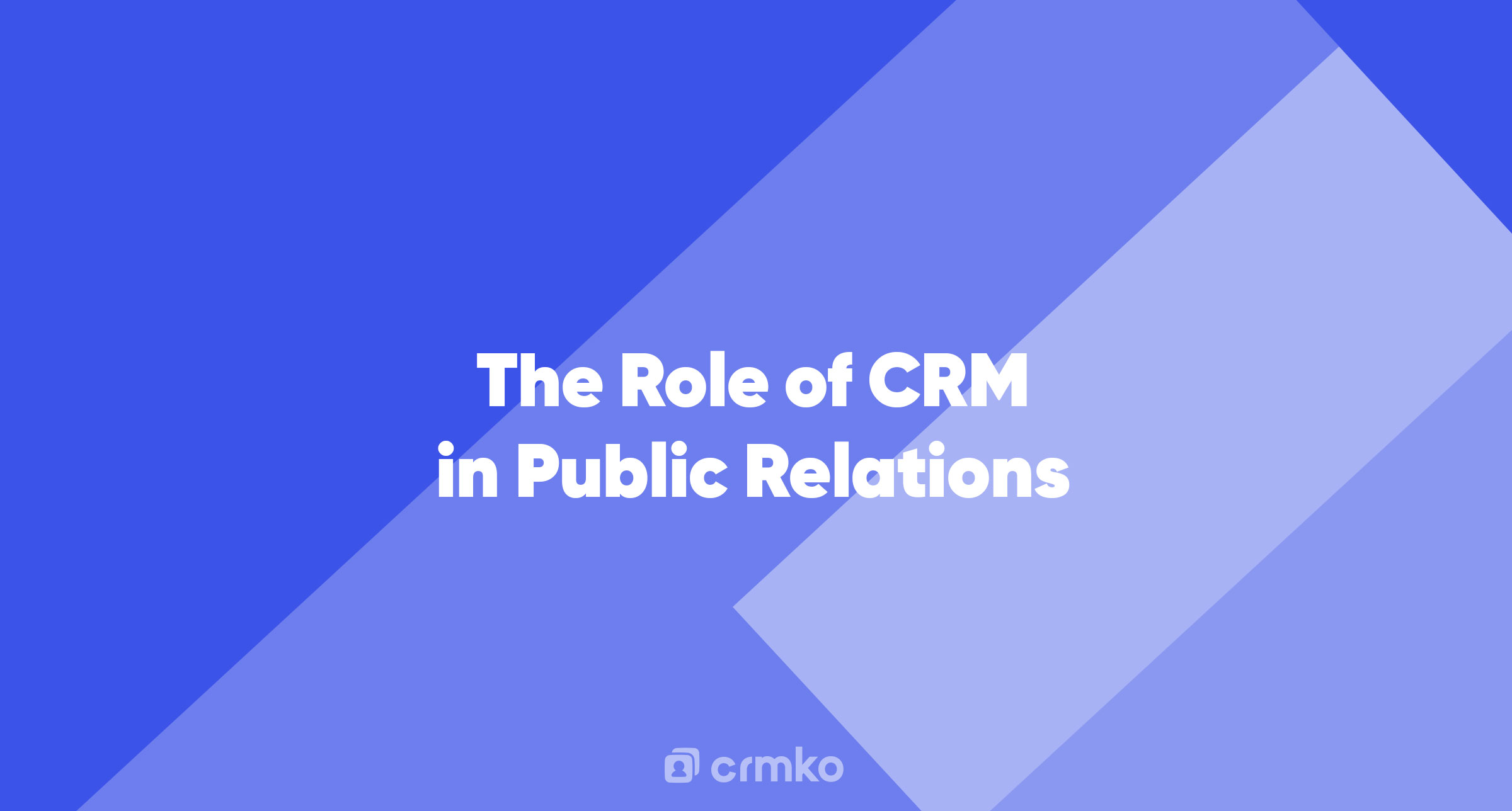In the interconnected world of business and communication, tools that streamline processes and enhance relationships are invaluable. One such tool that has made significant inroads across industries is the Customer Relationship Management system, or CRM. While CRM is often associated with sales and marketing, its impact on the realm of public relations (PR) is profound. In this article, we will explore the role of CRM in public relations, shedding light on its significance and benefits.
Understanding CRM and Public Relations
Before delving into the intricacies, let's briefly understand the two central concepts:
CRM is a technology designed to manage a company's interactions with current and potential customers. It centralizes customer data, streamlines communication, and offers insights into customer behavior, all with the aim of improving business relationships and driving growth.
Public relations, on the other hand, is the practice of managing and shaping the public perception of an organization or individual. PR professionals work to build and maintain a positive image, manage communication with the media, and handle crisis situations.
How CRM Enhances Public Relations Efforts
Now, let's explore the synergy between CRM and public relations:
- Media Relationship Management: Just as businesses need to manage relationships with customers, PR professionals need to manage relationships with the media. CRM systems can store detailed information about journalists, bloggers, and influencers, including their areas of interest, past interactions, and preferred communication channels. This centralized database ensures that PR professionals can target their pitches effectively and build strong media relationships.
- Campaign Tracking: PR campaigns, much like marketing campaigns, need to be tracked and analyzed. CRM systems can integrate with tracking tools, allowing PR professionals to monitor metrics like media mentions, engagement rates, and overall campaign reach. This real-time tracking ensures that PR strategies can be refined based on performance metrics.
- Communication Automation: Regular communication is the bedrock of public relations. CRM systems can automate communication processes, ensuring that press releases, media invites, and other communication materials are sent out timely and to the right audience.
- Feedback Collection: Feedback, be it from the media, stakeholders, or the general public, is crucial for PR professionals. CRM systems can streamline feedback collection, ensuring that PR teams have insights into the public perception and can adjust their strategies accordingly.
- Crisis Management: In times of a PR crisis, timely communication is of the essence. CRM systems, with their centralized database, ensure that PR professionals can quickly reach out to key media personnel, issue statements, and manage the narrative.
Benefits of Integrating CRM in Public Relations
Leveraging CRM in public relations offers a plethora of benefits:
- Enhanced Efficiency: With centralized data, automated processes, and real-time tracking, PR teams can manage their efforts more efficiently.
- Improved Media Relationships: By offering tailored pitches and ensuring regular communication, CRM systems help PR professionals build and maintain strong relationships with the media.
- Data-Driven Decisions: The analytics and insights offered by CRM systems allow PR teams to make data-driven decisions, optimizing their PR strategies based on performance metrics and feedback.
- Proactive Approach: With real-time tracking and feedback collection, CRM systems ensure that PR professionals can be proactive, whether it's capitalizing on a positive news cycle or managing a crisis.
Best Practices for Using CRM in Public Relations
To maximize the benefits of CRM in public relations, here are some best practices to follow:
- Regular Data Updates: Ensure that the data in your CRM system is regularly updated. Outdated or incorrect data can lead to miscommunication or missed opportunities.
- Training: Ensure that your PR team is well-versed with the CRM system. They should know how to input data, extract insights, and leverage these insights in their PR efforts.
- Integration with Other Tools: Your CRM system should integrate seamlessly with other PR tools, be it tracking platforms, communication tools, or media databases.
- Feedback Loop: Periodically collect feedback from your PR team on the CRM system. Their insights can be invaluable in refining the system to better suit their needs.
Conclusion
In the dynamic world of public relations, where perception is everything, tools that enhance efficiency and relationships are invaluable. CRM, with its centralized database, communication automation, and real-time tracking, emerges as a powerful ally for PR professionals. By understanding the role of CRM in public relations, organizations can ensure that they not only streamline their PR efforts but also build strong, lasting relationships with the media and the public. As the world of communication continues to evolve, the synergy between CRM and public relations will only become more profound.
